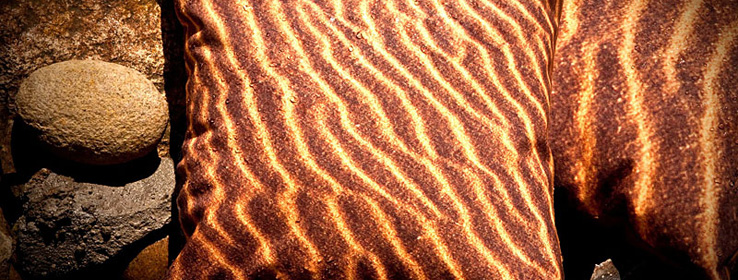Digitally printable textiles are proving to be an affordable and accessible way for interior designers to create custom items for their clients and to distinguish their goods from those widely available in the market.
Customization has become a hallmark of design, and digitally printable textiles are proving to be another avenue interior designers can take to create one-of-a-kind items for their clients. "Custom-printing fabrics is both affordable and accessible," says Rysa Pitner, co-founder of online-based Fabric on Demand. "The process makes it easy for designers to distinguish their goods from those widely available in the market."
Whether you're looking to launch your own line of pillows or craft a unique ottoman for a customer, digital printing offers many advantages. One is immediacy. "Digitally printed fabrics are much more on-demand," says Joseph Terramagra of printer manufacturer Mimaki USA. "You don't have to worry about the old method of screening. Setup time is shorter. And if you have any changes, you can make them quickly." What's more, there's no need for inventory. Adds Terramagra: "If you're digitally printing for a client, you don't have to stock rolls of fabric that no one is going to use."
Turnaround times are also favorable; many digital print studios can finish products within a week of receiving the final design. And designers don't have to be Photoshop or printing specialists to develop their own designs. If you can dream it, you can print it on nearly any textile. (Print shops typically have a variety of natural, synthetic and blended fabrics from which to choose.) While most printers do require a high-resolution image (typically 300 dpi) to fulfill orders, if you aren't adept at using imaging software, some printers offer graphic design assistance or can refer you to a graphic artist. Another benefit: Digitally printed textiles hold up as well as their conventional counterparts. "Color fastness and wear-and-tear are consistent with traditional fabrics," Pitner notes.
Many digital printers are Web-based, so everything from uploading the file to final approval is done online. That makes the process convenient, but working with an online shop does present one big challenge: color matching. Computer monitors display colors differently than the actual fibers do. To help customers get the colors they want, many print studios offer color charts and blankets, along with digital proofs and printed swatches.
Still, plenty of designers have overcome color obstacles to create original designs, and even their own entire collections. For instance, Jackie Von Tobel, author of The Design Directory of Window Treatments, developed her own line of cotton-linen and organic sateen fabrics that feature styles such as damask, paisley and chinoiserie. Premade pillows that complement the fabrics are also available for purchase. Von Tobel prints her fabric on an as-needed basis, eliminating the need for warehousing inventory. "You can do fabulous things with digital printing," Von Tobel says. "It's like you're working with an artistic canvas. You can do anything with it!"
And don't forget: Sherwin-Williams has more than 120 colors coordinated with Robert Allen fabrics as part of their multifaceted collaboration.
Photography by Ian Roarty. Images used by permission of Mint Pillows










